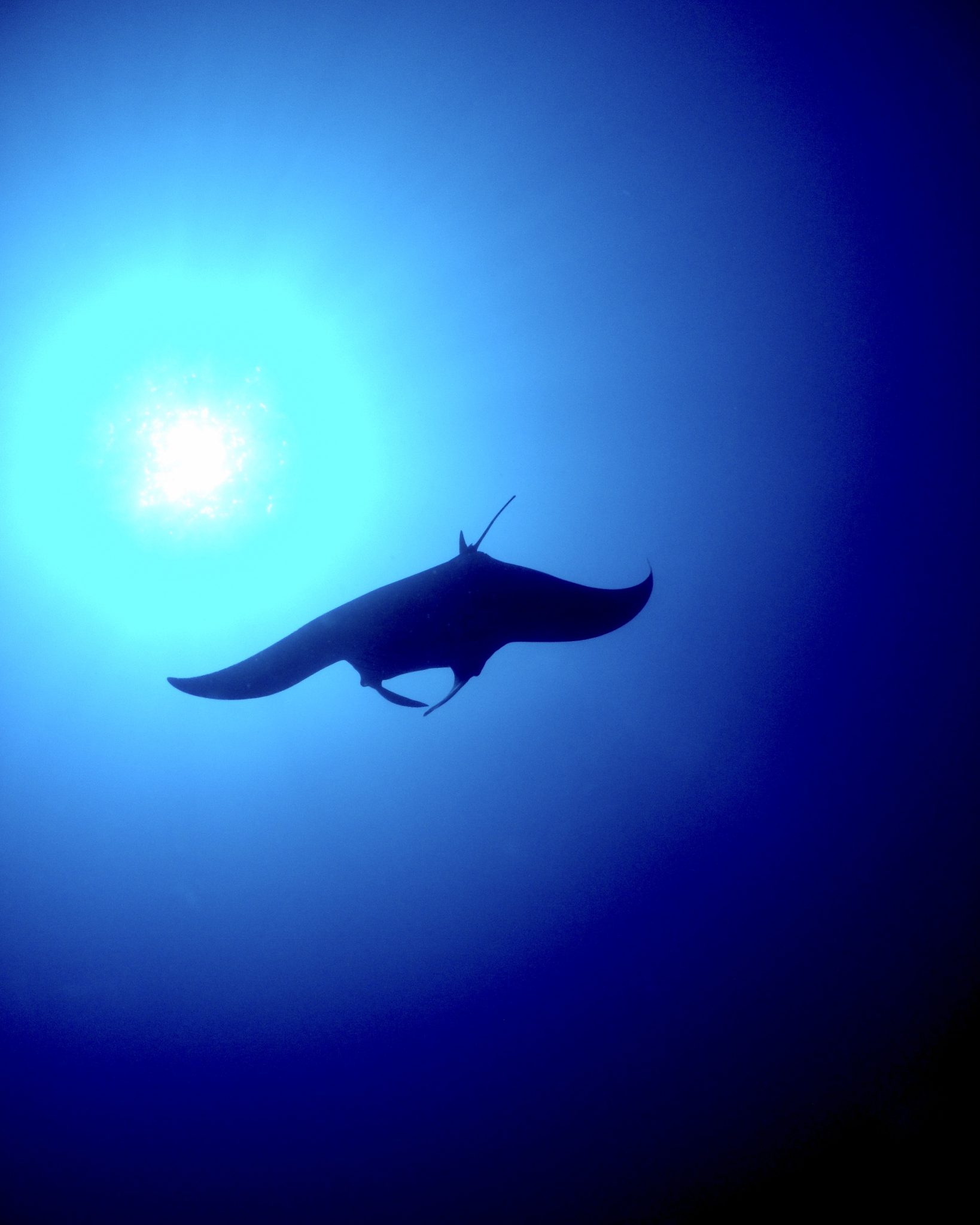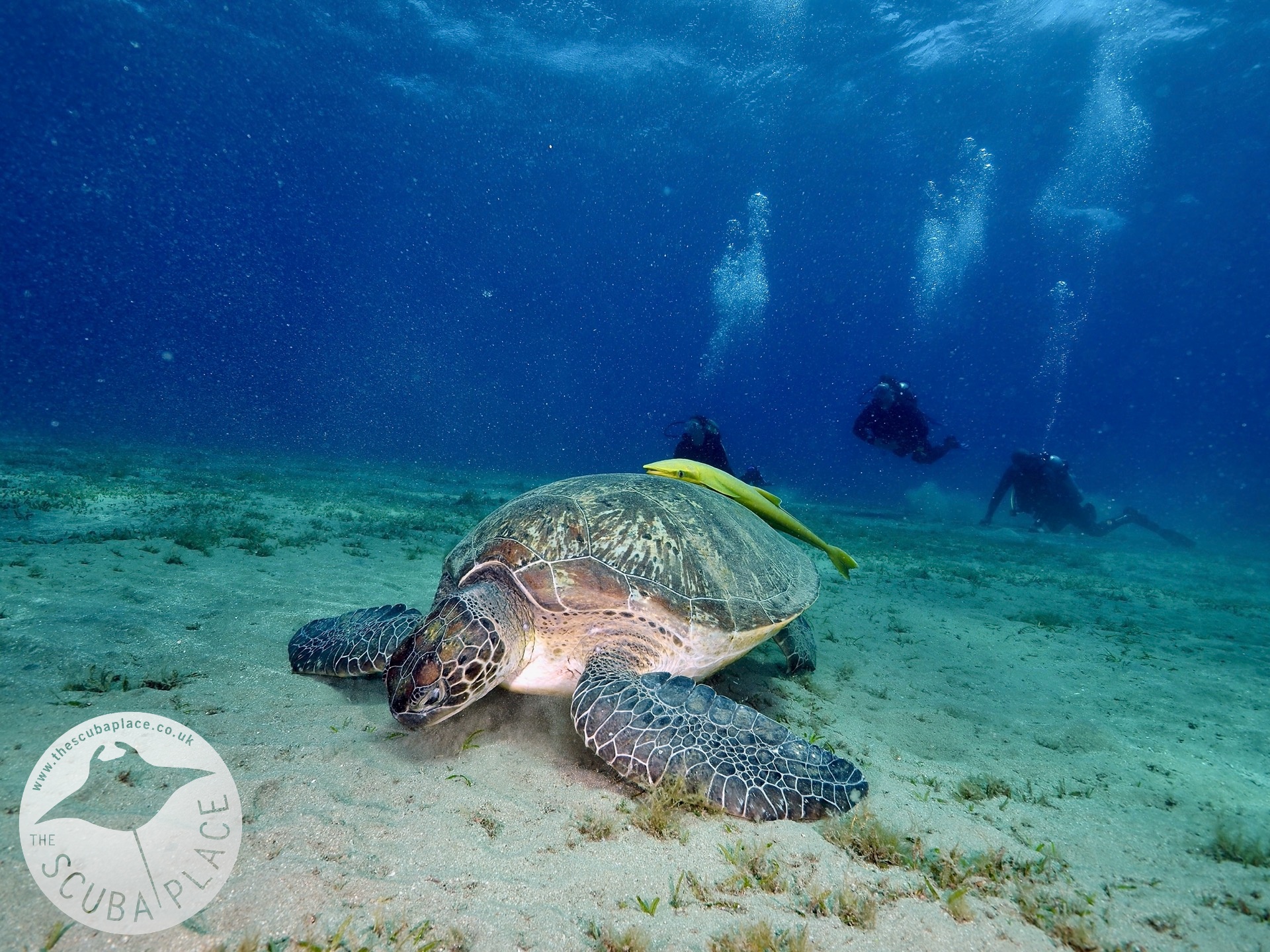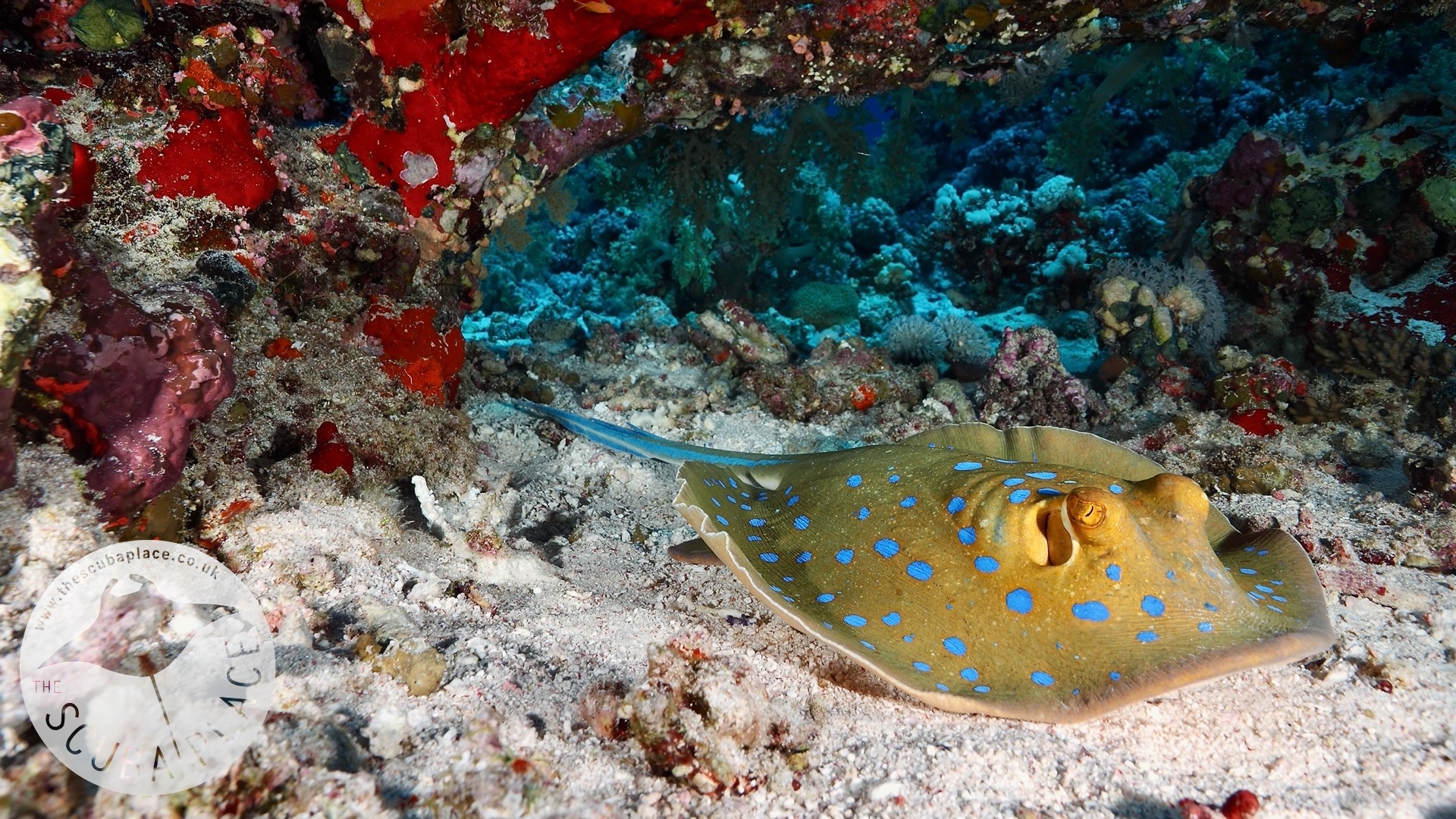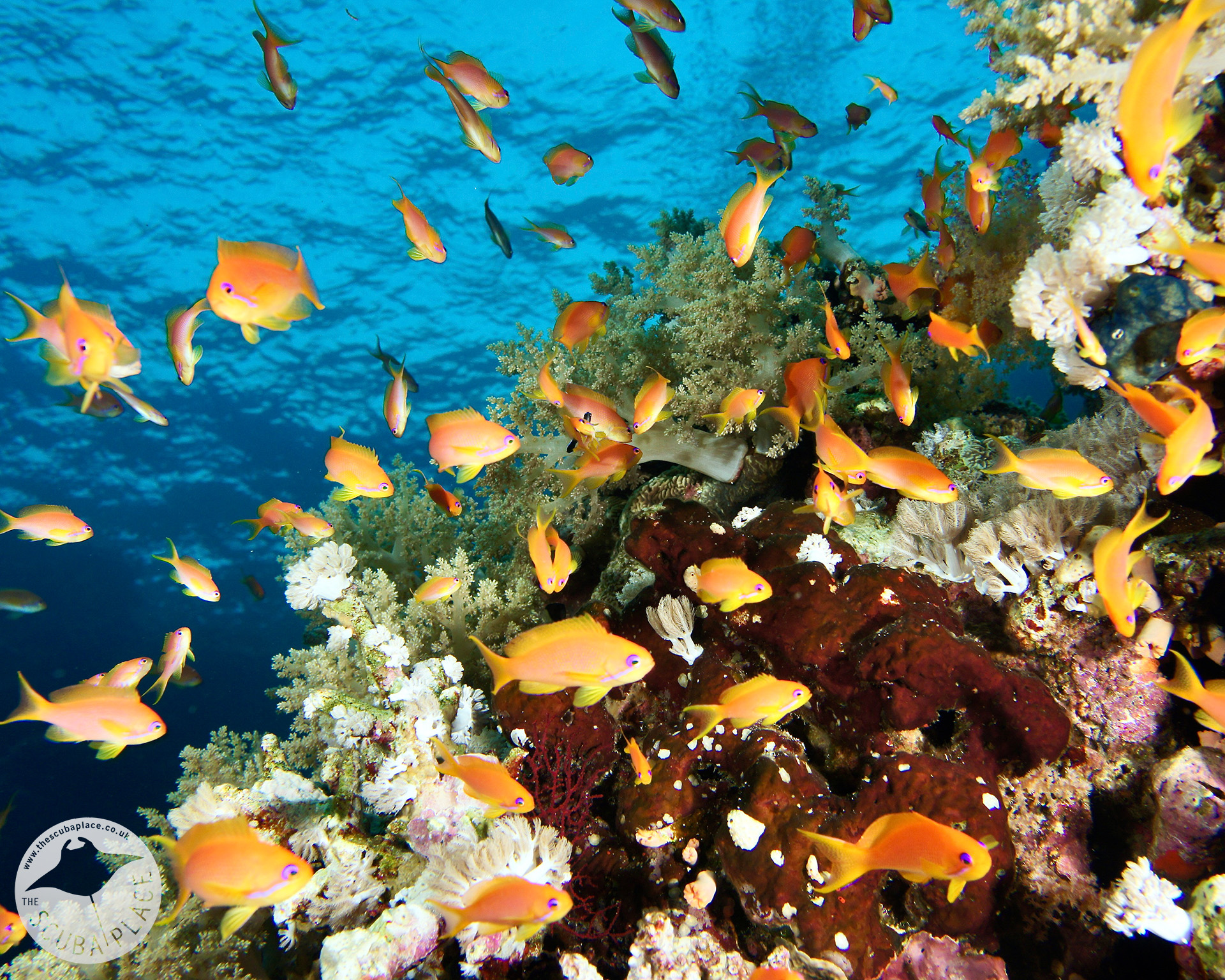News
Dive the Red Sea: Our Favourite Red Sea Safari Itinerary
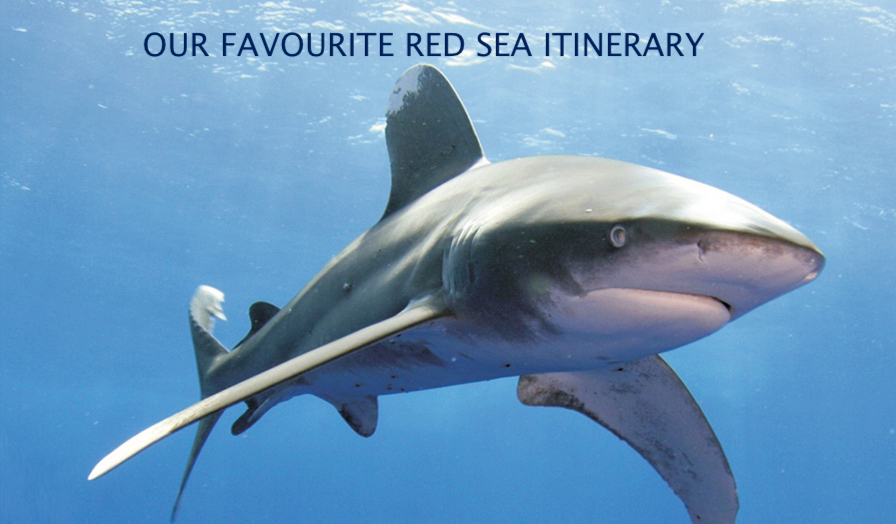
The Scuba Place talks about why the Deep South itinerary on Big Blue is their favourite Red Sea Safari…. Do you agree?
RED SEA WALL TO WALL, BDE or SIMPLY THE BEST? Whatever name you know this itinerary by, we can attest they all make perfect sense.
If you don’t know what I am talking about, then here is a guide to what I consider to be the very best liveaboard reef itinerary there is in the Red Sea. And I say reef deliberately so as not to confuse those who like all things rusty underwater – this is all about pretty things and fish, not hunks of metal! Although… there is a little bit of that too!
Some operators refer to this trip as “Simply the Best’, and I totally get that. Some call it simply Brothers, Daedalus and Elphinstone, and I can’t argue with that either. Some call it Red Sea – Wall to Wall, and that makes perfect sense too.
What is safe to say is, whatever you or they call it, this itinerary totally rocks!
There aren’t many divers across the globe who don’t know how good the Red Sea is, and we here in the UK are spoilt rotten by the fact that it is a mere 5 and a bit hours away. The resorts of Dahab, Sharm El Sheikh, Hurghada and Marsa Alam all offer really really good day boat diving, and the safaris are world class. The very best sites to dive are the offshore reefs where currents keep the corals super clean and healthy, and where the bigger animals come to feed and get cleaned – and the stars of these offshore reefs have to be The Brothers, Daedalus and Elphinstone.
Elphinstone is the only reef that is reachable by day boat – there are super-fast RIBS from Marsa Abu Dabbab that will make this trip, and day boats from Port Ghalib also make this trip, a journey that takes approximately 2 hours. But if more big reef diving is your preference, then the only way to do this is on a liveaboard safari.
Elphinstone itself is pretty spectacular. Sha’ab Abu Hamra, its proper name, is a reef that sits just below the surface some 6 and a half miles out to sea from Abu Dabbab. Bizarrely, for such a spectacular dive, the reef is a mere 300m long and some 20m wide at the surface. Running North to South, with steps down to 42 and 40m at either end, the reef ‘grows’ as you descend. Below the lowest steps, the reef drops into the abyss – and allegedly, no one knows how deep the drop-off actually goes!
It is, however, the depth of this reef that makes it so healthy and populated – the up currents bring food from the depths, making the reef at Elphinstone a super-sized dining table if you like. The corals are spectacular – big as can be, the brightest of bright and variety of colours, and marine life swarms the reef. The schools of anthias here are second to none, and bannerfish, parrot fish, damsels and surgeon fish add to the party. Sponges and beautiful soft corals fill your view as you look at the reef.
It is also super important to keep an eye on the blue too – barracuda, tuna and trevally sweep by constantly. Turtles and Napoleon wrasse are also often found here, and both mantas and whalesharks come by, but it is the sharks that really are the draw here. White tip and grey reef sharks are commonly seen, but the highlights here have to be the Longimanus – Oceanic Whitetip – and the hammerhead sharks.
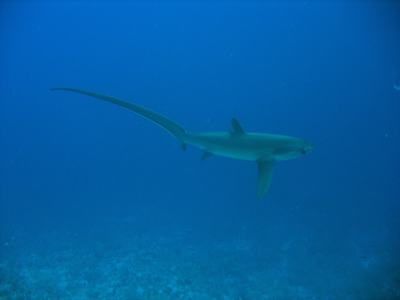 Our trip in May 2023 also delivered not one but two Thresher sharks on this dive site! We managed three drift dives – the expert zodiac crew dropping us off at the Northern point and meeting us at the Southern tip at the end of the dive on two of the three dives, letting us use the current to drift along at some speed and pop up an SMB at the end of the dive. Our third dive, the current had dropped to almost nothing, so we dropped down to the plateau at the southern end of the reef and hung around with a huge barracuda and a couple of Napoleon wrasse.
Our trip in May 2023 also delivered not one but two Thresher sharks on this dive site! We managed three drift dives – the expert zodiac crew dropping us off at the Northern point and meeting us at the Southern tip at the end of the dive on two of the three dives, letting us use the current to drift along at some speed and pop up an SMB at the end of the dive. Our third dive, the current had dropped to almost nothing, so we dropped down to the plateau at the southern end of the reef and hung around with a huge barracuda and a couple of Napoleon wrasse.
A good safari boat will give you a full day of diving here at Elphinstone, but it will be for one day at the beginning of the trip in all likelihood – there are no anchoring points here for overnight stays. An additional day might be available at the end of the trip if you are super unfortunate and the weather disrupts the other sites, but that isn’t that unlucky in my book
Next comes the dives at The Brothers. Big Brother and Little Brother sit approximately 35 miles off the mainland coast of Egypt – far enough to make them reachable only by safari boat. That is great news for divers on a liveaboard – no day boats! However, there can be lots of safari boats, but a good Captain and Dive Manager will work with the other boats to make sure there are as few divers as possible in the water at any time.
 The local name for the Brothers is El Akhawein, and these two islands are reputed to be the very best dive destination in the Red Sea. They sit in a protected marine reserve, and like Elphinstone, there are no moorings here, so no night dives or overnight stays. Both islands are uninhabited, although there is an operational lighthouse on Big Brother.
The local name for the Brothers is El Akhawein, and these two islands are reputed to be the very best dive destination in the Red Sea. They sit in a protected marine reserve, and like Elphinstone, there are no moorings here, so no night dives or overnight stays. Both islands are uninhabited, although there is an operational lighthouse on Big Brother.
There are also two wrecks on Big Brother – the Aida which sits between 15 and 45 metres on the Western side of the island, and the Numidia, sitting between 10 and 85 metres deep on the Northern side. Both are excellent wrecks and have been down long enough to be overgrown with corals and inhabited by marine life.
The Numidia wreckage breaks up the reef nicely and we found numerous huge, bearded scorpion fish and a handful of nudibranchs sitting on its superstructure, pipefish and again, large Napoleon wrasse, but seeing another thresher shark, closely followed by a large manta ray, was the highlight for me.
We crammed in four dives here – one on Little Brother, and three on the big sibling. They were all totally amazing – this has to be my very favourite spot in the Red Sea. Straight to the point – manta ray, thresher shark, grey reef shark, turtles, hordes of schooling fish and the most stunning soft corals ever. Loved it, loved it, loved it!
It was then on to Daedalus Reef. I have tried to get here on several occasions in the past but got beaten by the weather and other circumstances, but this time, with now flat calm seas, I knew we were going to get there! A long overnight sail against the wind had us arrive at about 0500 and then it was down to some serious deep sleep before waking for a day of diving.
Daedalus Reef, also known as Abu Kizan, is a pinnacle with a man-made island and lighthouse sitting atop. It can be found c.50 miles out to sea, due east of Marsa Alam and slap bang in between Egypt and Saudi Arabia. Accessible only by liveaboard, this is a super-remote place and a protected marine park. This, combined with the flowing currents, make it incredibly populated and super-healthy.
Diving on the east side in the morning and the west side in the afternoon gives the very best light, and whilst we try to do this, all diving here is decided by the currents. The good news is, although no night dives are permitted, overnight stays are, and this means another day of diving is available! This was a no-brainer for us, the diving here is phenomenal.
As well as the now common abundance of incredible corals and reef inhabitants that we experienced on this trip, Daedalus is probably the best place in the Red Sea to see hammerhead sharks in big numbers, for they seem to school here. On this trip, we didn’t get to see schooling hammerheads, but we did get several individuals on each dive. We also saw another manta, plenty of trevally, a school of barracuda, a turtle or two and some of the healthiest corals ever. Other divers allegedly saw a whaleshark, but not us, sadly.
On top of that, the surface intervals here give you an opportunity to leave the safari boat and go on to the island, climb up the lighthouse where the views are amazing, and even buy a t-shirt from the ‘shop’ on the island.
I have dived the Red Sea for more than 15 years now, going at least twice a year, and that is a lot of diving. I love the amazing wrecks to the North, Rasmo and Tiran too, but honestly, for me, there is nothing like hitting these huge offshore reefs and experiencing their amazing offerings.
Thresher sharks? Mantas? Oceanic white tips? Hammerheads? Yes – and so much more – all in some of the healthiest and most beautiful coral environments there are.
Want to be blown away? Do this trip. Simply the Best works for me!
Our vessel for the week was the British-owned and operated Big Blue. At 42m, she is one of the larger boats in the fleet and sleeps up to 22 people, so there’s a lot of space on board. Smaller boats take more people, but we like space! We had twinset and sidemount divers with us, and no one was cramped on the dive deck. The food is great, and there is plenty of it; the crew are highly professional and fun, the air-conditioning works, and the cabins are plenty big enough. Beers are cheap, which helps, and mixers are free of charge should you bring some gin on board.
Big Blue does not mandate the number of dives you need to book a trip or set a minimum qualification other than Open Water (or equivalent), but what they do insist upon is that you have both a reel and SMB, and that you can use it properly. The check dive will involve everyone sending up an SMB, just to ensure a level of competence.
Key Facts :
- Getting there : EasyJet flies from Gatwick, Bristol and Manchester direct to Hurghada in just 5 hours. We were greeted by staff airside with our visa which is a great service! Saved us from queueing to purchase our visa. Once we had baggage in hand we loaded up for a quick 15 minutes to the marina.
- Air temperature : Varies from a low of 21°C in December January to 32°C in July August.
- Water temperature : 24-28°C. A 3-5mm full suit will suit most in the summer months.
- Visa requirement : for £30 we had a VIP visa service offered by Big Blue. We were met airside with our visa and avoided standing in the queue to purchase.
- Health protocols : You do not need to show a COVID vaccination certificate or negative COVID test to enter Egypt. Health officials may screen you for COVID symptoms on arrival. They may also randomly select travellers for rapid antigen testing.
- Currency : Egyptian pounds, Euros, British pounds are all accepted on board Big Blue.
- Electricity : 220V with 2 prong sockets. An extension lead is always a good idea.
- Internet and Wi-Fi : There is limited signal when out to sea. We did take along a dongle and purchased a sim card at the airport for £10 for 20G of data.
Price Guide: Expect from £1,650 per person with EasyJet flights based on two sharing a standard cabin for 7-night safari with NITROX included. Marine park and Port fees are also included but the Environmental tax of €70 will be collected on board. Bar bill and tips are extra.
Our Advice: If you haven’t been on Big Blue give it a try. It’s spacious and super comfortable and they have a relaxed attitude with an emphasis on diver safety. Half and full charters are available as well as individual spaces. We’d be happy to help your dive club charter a week!
Packing tips :
- Reef friendly sunscreen : The sun can be fierce on the water so come prepared!
- Reading material : Bring your Kindle loaded with a few books – remember wifi signal can be sketchy… or a few paperbacks… there’s a shelf in the salon for book sharing if you want to leave them behind.
And most importantly….
SMB and reel : and please make sure you know how to use it.
 The Scuba Place designs and builds custom scuba diving holidays. With personal knowledge and experience diving in many of our destinations, there is no one better to help build your dream dive holiday. Come Dive with Us!
The Scuba Place designs and builds custom scuba diving holidays. With personal knowledge and experience diving in many of our destinations, there is no one better to help build your dream dive holiday. Come Dive with Us!
Call us at 020 3515 9955 or email at reservations@thescubaplace.co.uk
Find us on
Facebook : https://www.facebook.com/thescubaplace
Instagram : https://www.instagram.com/the.scuba.place/
YouTube : https://www.youtube.com/channel/UCH684OdioYirI-zzdT58Ceg
Blogs
Your Personalised Dive Adventure in Pemba Island, Tanzania

Discover Pemba Island—Tanzania’s Underwater Paradise!
 Join Fun Divers Zanzibar, the local PADI Dive Resort, and explore the pristine waters of Pemba Island with our exclusive Dive & Stay Packages for 2025. Book now to save 15% on packages and PADI courses from February to November. Immerse yourself in an underwater adventure that reveals the best of Tanzania’s stunning marine life.
Join Fun Divers Zanzibar, the local PADI Dive Resort, and explore the pristine waters of Pemba Island with our exclusive Dive & Stay Packages for 2025. Book now to save 15% on packages and PADI courses from February to November. Immerse yourself in an underwater adventure that reveals the best of Tanzania’s stunning marine life.

Email: info@fundiverszanzibar.com / Call: +255 773 116 436 / Web: fundiverszanzibar.com/diving-pemba-island
Why Pemba Island?
Pemba Island is renowned for its untouched underwater world and extraordinary dive sites, featuring a mix of wall and reef dives suitable for all certification levels. Home to vibrant marine life and breathtaking underwater landscapes, Pemba is a bucket-list destination for underwater explorers.

Email: info@fundiverszanzibar.com / Call: +255 773 116 436 / Web: fundiverszanzibar.com/diving-pemba-island
Why Choose Fun Divers Zanzibar?
We are the first locally owned PADI Dive Resort in Zanzibar and Pemba Island. Our professional team consists of experienced Zanzibari divers who grew up as fishermen, giving them unparalleled knowledge of the area’s reefs and marine life. Dive with our local PADI Pros for an authentic, unforgettable experience.

Email: info@fundiverszanzibar.com / Call: +255 773 116 436 / Web: fundiverszanzibar.com/diving-pemba-island
What We Offer
*Tailored adventures: Experience personalized dive plans with flexible schedules, catering to all experience levels and small groups, ensuring dedicated attention from our expert local PADI Pros*
*Top-tier equipment: Free rental of high-quality dive gear from Scubapro and Mares*
*Adaptable tanks: 12-liter aluminum cylinders compatible with both Yoke and DIN valves*
*Idyllic setting: Our brand-new dive center is located on the serene Mkunguni Beach, offering 5 cozy garden-view rooms for a peaceful retreat*
*Delicious dining: Enjoy local and international cuisine at our beachfront restaurant, with meals starting at just 10 USD*

Email: info@fundiverszanzibar.com / Call: +255 773 116 436 / Web: fundiverszanzibar.com/diving-pemba-island
Seven Reasons to Dive With Us
*Green Paradise: Pemba Island’s lush vegetation creates a unique, refreshing climate*
*Big Fish Encounters: Pemba Island‘s extensive coral formations, underwater mountains, and steep coral walls offer excellent opportunities to spot large pelagic fish, especially for experienced divers*

What’s Included in Your 2025 Dive & Stay Package
*Complimentary scuba refresher course*
*Personalized dive guidance from expert local PADI Pros*
*On-site accommodation with breakfast*

Affordable Pricing
Spaces are limited—don’t miss this chance to dive into adventure and uncover the wonders of Pemba Island!
Book Now!
📞 Call: +255 773 116 436
📧 Email: info@fundiverszanzibar.com
Gear News
Introducing the TR-80, IR-50 and CS-30 Regulators from DYNAMICNORD

Whether you are a beginner or a professional diver – with the three new main regulators from DYNAMICNORD, everyone will find their favourite regulator. They all look super stylish.
Excellent performance with the TR-80
Quality and performance are the be-all and end-all for regulators. It is not for nothing that the TR stands for Tec Reg. The innovative design of the TR-80 guarantees absolute reliability – even in ice-cold waters.

Perfect breathing effort at 0.8 J/l / certified for diving in waters below 10 degrees / structural design made of solid brass for best cold protection / membrane-compensated design with dry seal of the first stage / reduced exhalation effort thanks to optimized exhalation membrane and bubble deflector / adjustable Venturi (dive/predive) and adjustment knob for individual inhalation comfort / innovative design of the front cover prevents free-flow in strong currents or when diving with scooters / design made of sandblasted brass, matt chrome finish / 2 HP and 4 LP outlets / mouthpiece made of high-quality, anti-allergic silicone for maximum comfort.


Amazing underwater adventures with the IR-50
The IR-50 is the top regulator for advanced and experienced divers. Natural breathing is the essence of this regulator.

Ideal breathing effort at 0.8 J/l /certified for diving in waters below 10 degrees / compensated membrane / adjustable venturi (dive/predive) and adjustment knob for individual inhalation comfort/ outlet valve and deflector for minimum exhalation effort and reduction of bubbles on the face / design made of sandblasted brass, matt chrome finish / 2 HP and 4 NP outlets / mouthpiece made of high-quality, anti-allergic silicone for maximum comfort.


The Workhorse – our CS-30
For diving centres and diving beginners – the workhorse stands for strong construction, reliability and robustness. Perfect for your training.

Optimal breathing effort at 0.8 J/l /recommended for diving in waters above 10 degrees / non-compensated piston / adjustable venturi (dive/predive) / outlet valve and deflector for minimum exhalation effort and reduction of bubbles on the face / design made of sandblasted brass, matt chrome finish / 1 HP and 3 NP outlets / mouthpiece made of high-quality, anti-allergic silicone for maximum comfort.


Octopus OP-30
The OP-30 is the ideal addition to all DYNAMICNORD regulators. It is identical in construction to the CS-30.

The TR-80, IR-50, CS-30 (DIN & INT) regulators and the Octopus OP-30 are available from DYNAMICNORD dealers and in the online store.
DYNAMICNORD – Your Outdoor Companion.
-

 News3 months ago
News3 months agoIconic SS United States to become the World’s Largest Artificial Reef
-

 Blogs2 months ago
Blogs2 months agoScubaverse Christmas Gift Guide 2024: Day 4
-

 News2 months ago
News2 months agoSanta Divers take the Plunge for Charity
-

 Blogs2 months ago
Blogs2 months agoScubaverse Christmas Gift Guide 2024: Day 1
-

 News3 months ago
News3 months agoDiscover Turquoise Divers and Media Luna Beach & Dive Resort: A Premier Diving and Relaxation Destination in Roatan
-

 Blogs2 months ago
Blogs2 months agoScubaverse Christmas Gift Guide 2024: Day 5
-

 Blogs2 months ago
Blogs2 months agoScubaverse Christmas Gift Guide 2024: Day 2
-

 News3 months ago
News3 months agoToucan Diving at Plaza Beach and Dive Resort Bonaire Introduces PADI Mermaid Training



